Welcome to Exp. Share, Kotaku’s weekly Pokémon column in which we dive deep to explore notable characters, urban legends, communities, and just plain weird quirks from throughout the Pokémon franchise. This week, we talked to rural and disabled Pokémon Go players about the impact of changes to the game’s Remote Raid mechanics that stand to make the game inaccessible to swaths of the community.
My first and really only experience with Pokémon Go happened around the game’s launch in 2016. I lived in a small town in Georgia, and there weren’t a lot of PokéStops for me to walk to and really engage with the game. I’d heard that if you walked around long enough when it asks you to pick your starter Pokémon, Pikachu would appear instead of the game’s typical offering of Bulbasaur, Charmander, and Squirtle. My house was practically in the wilderness, so rather than driving a town over, I elected just to walk circles around my backyard until the electric mouse showed up. Once he did, I caught him and decided to put the game away forever.
Pokémon has been a huge part of my life for decades, and it’s weird to think about how the Pokémon Go phenomenon was never really part of that. But while people who lived in big cities created entire communities with people they walked alongside, catching Pokémon on their phones together, that wasn’t really viable for me, or millions of others who lived in rural areas. Pokémon Go has never really been for anyone who doesn’t live in a walkable city. This changed to some degree in 2020 when developer Niantic implemented Remote Raids, which allow players to participate in raids that aren’t in their immediate proximity. These were positioned as a temporary measure, a way for people to play the game without leaving the house during the early years of the covid-19 pandemic.
On top of making the game more viable for those who live outside of big cities, Remote Raids made a game that was mostly inaccessible to people with disabilities actually playable from the comfort of their homes. Now, in an attempt to return to supposed normalcy, Niantic is making Pokémon Go much harder to play remotely by adding new daily restrictions to Remote Raids and making them more costly to play. Any game’s community expressing frustration when microtransactions are made more expensive is to be expected. But for Pokémon Go’s disabled and rural players, there’s an unsettling feeling that there’s a tax being put on them, specifically.
How do changes to Remote Raids affect the Pokémon Go community?
This announcement came at the end of March, with the company nearly doubling the price for Remote Raid Passes, and restricting access to these raids to five per day. According to Pokémon content creators like the It’s Super Effective podcast, Niantic sought feedback on these changes from designated members of the community before they were announced. It sounds like the company had pushback on these restrictions, but did ultimately still implement them.
“The short of it is, Niantic asked for feedback from Pokémon Go creators,” Steve Sarumi, the host of It’s Super Effective tells Kotaku. “We gave them things that we thought would work, we gave them changes that may not be as upsetting, and we gave them everything else under the sun but at the end of they day, we still arrived at this point.”
While Niantic was seeking feedback ahead of launching these changes, it sounds like when the company was looking for feedback on Remote Raid restrictions, it hadn’t settled on a specific number for how many of these battles players would be able to partake in on a daily basis. “We had no clue if it was going to be three or five or 10 or 20,” Sarumi says.
Now, swaths of the Pokémon Go community are left wondering if the game is really for them anymore. Remote Raids have been one of the only parts of the game’s infrastructure that felt accommodating to those who live in rural areas or have a disability that makes walking around to play difficult or impossible, even if they weren’t explicitly designed with such players in mind, but rather were just a response to people being stuck at home at the beginning of the covid-19 pandemic.
Read more: Pokemon Go’s Creators Want Players Back Outside, Despite The Outcry
Erica “smollock” Chamblee is a Pokémon Go player who lives in what she calls a “very small farming community.” She says it takes her 20 minutes to get to the nearest grocery store and the town has around five PokéStops. The most populated area has three gyms, but cell service is spotty, so even the gyms in the area go unused. Though she has played Pokémon Go since it launched in 2016, Chamblee says Remote Raids actually made the game playable, and helped her connect with other users despite being in a place Pokémon Go never felt built for.
“The inclusion of Remote Raids changed the entire play of the game for me and my family,” Chamblee tells Kotaku. “We were suddenly able to participate in these raids that were completely out of reach for us. Even if we had a raid previously, no one in our area even plays, so there would be no way to defeat the raids. Suddenly we had access to friends and family who would help us complete raids and even invite us to their own! It was such an improvement to the game, that we would raid daily, coordinating groups and who needed which Pokémon, either for their dex, a completion challenge, or even just out of trying for a shiny or a hundo.”
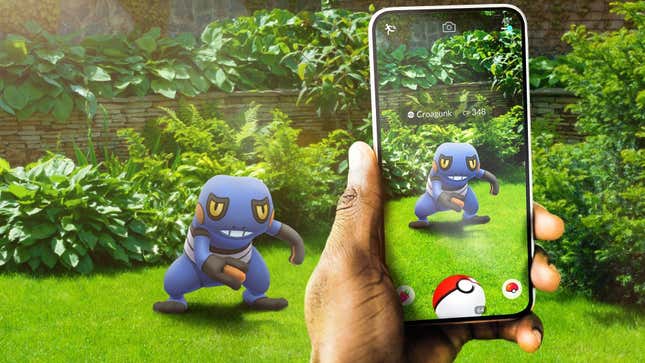
The problem for rural players of Pokémon Go is twofold. Not only is it difficult to access the game’s features like PokéStops and gyms because they’re simply aren’t enough of them in the game’s map, but the community around them is also much smaller than in most cities. The Go community is so small in Chamblee’s area that her Pokémon can defend a gym for “hundreds of days” without interruption. Matthew Finneman, a member of the Super Deluxe GameCast, says even when he lived in New Orleans (he has since moved to St. Petersburg, Florida), one of the biggest hurdles he dealt with was a lack of players to help him actually play through more difficult raids.
“Even if there were raids nearby, unless it was a one or three star [raid], I couldn’t take it because there were rarely other players nearby,” Finneman says. “Remote raids absolutely changed it. I’ve met more ‘local’ players via remote raid groups than I ever would have, and even though we may be in the same city or state, remote raid passes make it possible to coordinate and raid together as a group.”
For a game like Pokémon Go, location is everything. Even if you live in a fairly populated area with a decent amount of PokéStops and gyms to play at, sometimes you go weeks or months without playing the game because the weather makes walking around less than ideal throughout much of the year. Veerender Singh Jubbal, a writer who covers Pokémon Go for websites like IGN, lives in Ontario, and says the area’s periods of heavy snowfall have made it difficult to play the game by walking around. As a result, he would often uninstall Pokémon Go until conditions cleared up, but that changed with Remote Raids.
“We have heavy snow very well into spring, so remote raids were a major factor for me to play in the non-summer months,” Jubbal says. “I always uninstalled the game from about November to March or April each year because of Canada weather. It is currently uninstalled, but the pandemic proaction and aid allowed me to play not just through the pandemic; but [in] these heavy snowfall months the game just does not work too well for Canadian residents in Ontario.”
Remote Raids have opened up a core pillar of Pokémon Go to players who have often had to do without based on where they live, but for disabled players, they’ve become a key part of playing the game at all. Becca Beckery is both a rural Pokémon Go player and a disabled person with Hyper Ehlers-Danlos Syndrome and Postural Orthostatic Tachycardia Syndrome, the latter of which affects her blood pressure when she moves or changes positions. Because of this, she has trouble engaging with some of Pokémon Go’s mechanics like hatching eggs which require the player to walk. While she’s found workarounds by getting some in-game items like candy from friends, in general she’s not able to play Pokémon Go the way Niantic wants people to, and she says these new restrictions on Remote Raids feel inconsiderate of how disabled players navigate the game and the world.
“My immediate reaction was anger,” Beckery says. “It’s already difficult enough to get Pokémon due to the fact that they spawn more when you are moving around. It’s not something a lot of us can do, not even just as disabled people but for women or femme-presenting people too. It can be so dangerous for us to be constantly looking at our phones when alone. With even more restrictions, it very much comes across as incredibly ableist. It’s taking away any opportunity for disabled people especially to enjoy it like everyone else.”
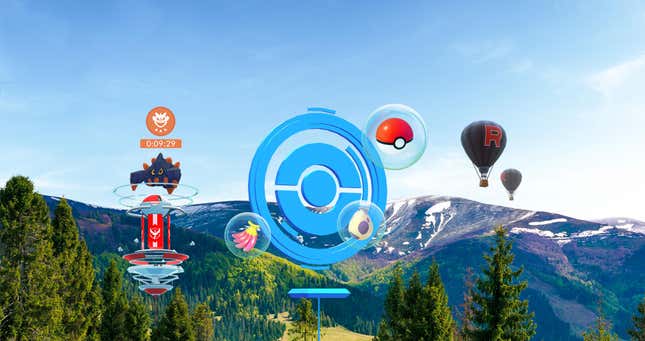
For some, the disability isn’t even a physical limitation, but a mental one. Sharon Boswell, a player who describes herself as having been “obsessed” with Pokémon Go since launch, says she developed severe agoraphobia (fear of crowded spaces) at the beginning of the pandemic that she’s still dealing with to this day. While she has played the game frequently over the past seven years, Boswell says Niantic’s insistence on forcing players back to local events has felt like a gradual but inevitable barrier to entry.
“The game isn’t always as accessible for me depending on how I’m doing, and each time Niantic pushes further to make certain things local-only, I feel a little more excluded,” Boswell says. “It’s really disappointing because I really enjoy the game. Remote raids really kept me feeling connected when my friends would meet up for a raid event. If it was out of my ‘comfort zone,’ they still were able to include me.”
Remote Raids were always presented as a temporary addition at the beginning of the pandemic, but Niantic’s gradual rolling back of these measures has brought criticism down on the company for years. Marijn Rongen, a writer for the gaming accessibility website Can I Play That?, says increasing the cost and limitations on Remote Raids is par for the course for Pokémon Go and Niantic’s seeming disregard for the covid-19 pandemic. This isn’t an original problem, as plenty of companies are trying to enforce returns to office and public events are getting lax on their vaccination and mask requirements. But for Niantic to introduce a mechanic that felt respectful of the gravity of the pandemic, only to roll it back and make it more costly for people who need it, feels like a betrayal of those who stuck with the game over the past few years.
“To be honest, I was not surprised but [am] still angry,” Rongen says. “Niantic has been ignoring the pandemic for over a year now, and reverting what were amazing quality-of-life updates. The inflated cost, while providing an inferior experience to in-person raids is an insult to those who rely on them to play. It’s a disability tax on a group of players that are already spending more effort and money for access that others take for granted.”

In 2021, Pokémon Go players organized a boycott after Niantic reverted some changes meant to help players safely play during the covid-19 pandemic, such as increased interaction range that let players engage with mechanics from a distance. However, despite the boycott, Niantic didn’t budge on its changes. For some like Jubbal, it was a last-straw moment. Though he eventually returned to the game for work over a year later, it felt like a declaration of Niantic’s values: profit before safety.
“Players wanted to boycott on a specific day to really show [Niantic] they did not understand how the pandemic was still very bad,” Jubbal says. “I joined in on that one-day boycott, and was livid that Niantic did not care even though they saw that massive group boycott in terms of player drops. Then I never went back to play until IGN had me on for coverage. Niantic proved that they can [take measures] to protect all of their players. Rolling back those changes shows a direct lack of care they have built up the past few years not just to people avoiding getting Covid, but people in rural areas or living in communities that just are not on the GPS or maps.”
After the boycott, Niantic made the increased interaction distance permanent.
How the community is fighting back against Pokémon Go’s Remote Raid changes
Right now, the Pokémon Go community is speaking out against this once more with an online campaign represented by the hashtag #HearUsNiantic. The movement has organized petitions to revert the increase in price and restrictions on Remote Raiding, as well as ongoing coordinated boycotts attempting to starve the game of microtransactions and engagement. High-profile members of the Pokemon community, such as Serebii webmaster Joe Merrick, have also thrown their support behind the campaign.
What remains to be seen is if any of this will be acknowledged by Niantic, or if the community will have to make some hard decisions about whether they will (or even can) play the game in this form.
“The game is going to feel very empty moving forward, a lot of people I play with have already uninstalled the game with the announcement of the changes,” Chamblee says. “I get the feeling a lot more people are going to be doing the same, creating a void where a sense of community once was.”
Whatever happens now, it’s clear disabled players are feeling this especially hard as Niantic continues to push them out.
“I feel like this will further divide the community between able-bodied players and disabled players,” Rongen says. “The changes will make it very difficult for those who want to include and be included to connect to each other when their level of access is not equal.”
General public outcry is one thing, but many companies only speak the language of money, so Rongen hopes the boycotts or player drop-off might speak volumes that social media campaigns can’t.
“I hope it will hurt the revenue in a way that Niantic will realize this hasn’t been the best strategy for their players and them,” Rongen says. “If that doesn’t happen, I expect the game will slowly lose a part of the player base that is already way too used to being excluded.”
Whatever math Niantic has done to justify these changes, they have, ironically enough, made some players less likely to keep spending money on the game, money they started spending because of Remote Raids in the first place. Jeb Biggart, who does social media for Kotaku and other G/O sites, started playing Pokémon Go more frequently because the mechanic allowed him to play with his friends in Connecticut.
“If I’m being totally honest, it made me spend more money,” Biggart says. “Since raids were so much more accessible, it meant that I was using passes very frequently. The more remote raids I participated in, the more money I was inevitably spending to get more passes. Before that, I was rarely spending money on Pokémon Go. […] I don’t see myself spending more money just so I can continue to enjoy a feature that should just become a free option.”
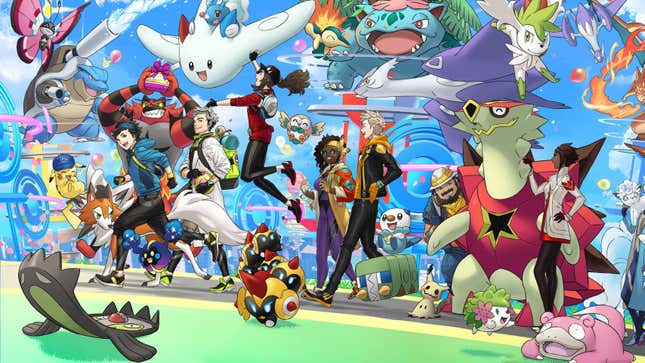
As far as what Niantic is saying publicly, Pokémon Go VP Ed Wu told Polygon that the original price of Remote Raid Passes was “distorting” the game’s economy and had “become a shortcut to playing the game.” When pressed on this, Wu said the social experience of playing the game in person is key to its market relevance, and that these changes were meant to keep that part of the game alive after so many players had opted to engage in raids remotely.
“Like any other game, we have to think carefully about what are the most epic adventures that you’re having with the game, and that the value is just as much from the journey as it is from the ultimate experience, which is Raids,” Wu says. “So much of the value that folks get out of Pokémon Go is actually that social interaction — the walking, the exercise, the exploration that they do together. By allowing the shortcut to that [with] a premium raid pass, we’re actually taking away much of the value that is unique to our product and differentiates it from pretty much every other thing out there.”
Meanwhile, fans have a theory that Niantic wants people playing the game in person so that the company can collect and sell map data, and that these efforts have been complicated since 2020 because people can play Pokémon Go without having to leave their couches.
“I’d have way more respect for Niantic if they didn’t lie to us about the reasons,” Finneman says. “Just say you want more GPS data to sell and because of remote raid passes that’s been curtailed a bit.”
We’ve reached out to Niantic for this story and will update it should we hear back.
Pokémon Go has persisted for seven years at this point, and even if it’s not quite the worldwide phenomenon it was in 2016, Niantic is still supporting it with frequent updates and events. But eventually, even the rosiest of rose-colored glasses have to come off and remind us that, as much as Pokémon Go has helped cultivate community and a resurgence of affection for all 1000 of the titular Pocket Monsters, it is still a product. If it’s not doing what its creators want it to do, they may well undermine what made it so beloved to so many in the first place. Remote Raids may have been introduced as a temporary workaround, but they opened up aspects of Pokémon Go to people who had long felt excluded from the cultural zeitgeist. If Niantic chooses not to listen to their pleas but does keep able-bodied city dwellers playing and spending money, the game will likely survive this hit. But the community surrounding it won’t be the same.
Update 4/10/23 11:22 Eastern Time: Added information about the status of increased interaction distance after 2021 boycotts.

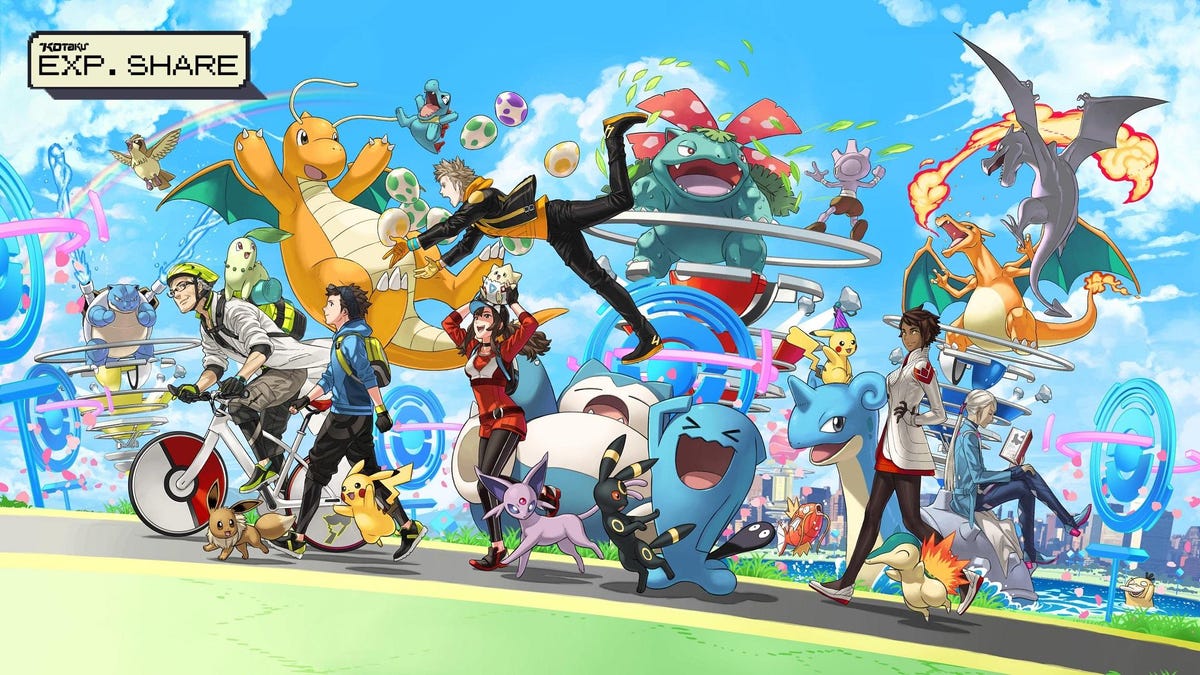
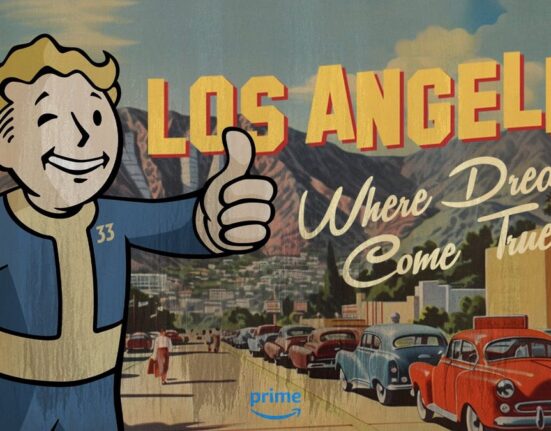



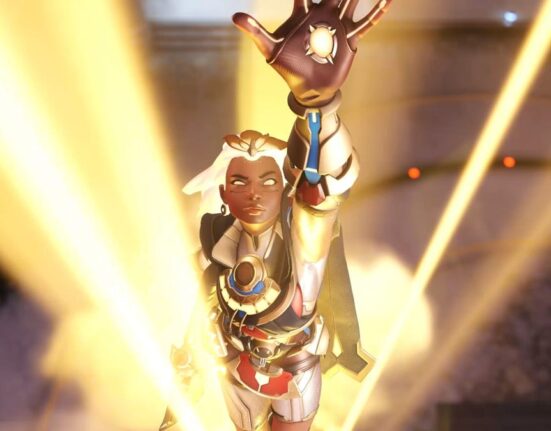
Leave feedback about this